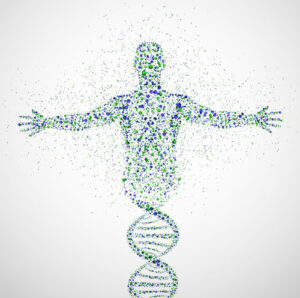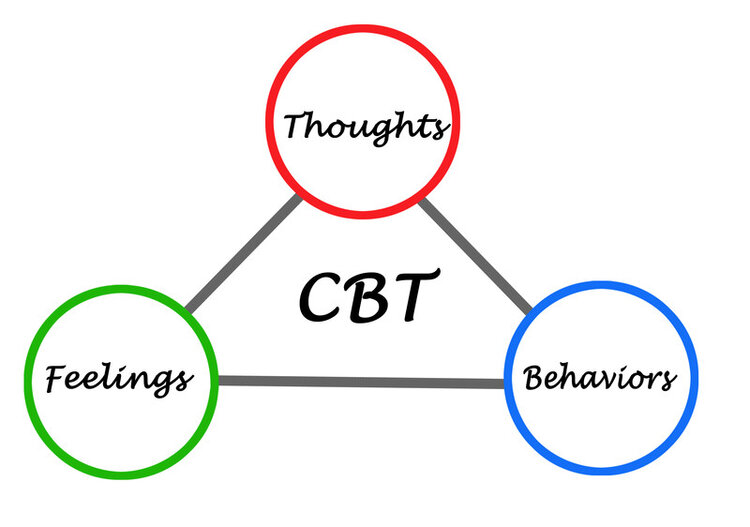Our Normal Vs. Natural Blueprint
Medicine, including mental health, stands out for being a field where we are trying to fix a problem without the real and root understanding of its cause. But this, is in no way, malicious. At least we try to understand. At least, we have been trying for centuries and we have found the answers to what we’ve been looking for, yet, the practice of medicine and mental health, has changed very little, and a reflexive question would be: Why? Except that a book of different volumes would not suffice to elaborate on why our clinical practice has remained almost the same despite the advances in science. One thing, however, that is worth looking at is the fact that medicine, at least in the richest countries, including in the US, has found ways to catch up with technology. Mind-reading exoskeletons, 3D printed drugs, gamification in healthcare insurance, are just three of the ever-growing technologies in medicine. There is a trend. There is a reason why the latest in science has been applied at one level in medicine and mental health, while not at another level, despite the fact it is the same science.
SWEET’s vision is to ensure that the latest in science makes it to the hands of clinicians, which in turn will help ease pain and suffering for all patients, understanding that the application of this knowledge will not profit the pharmaceutical industry, the health insurance industry, or the technology business of medicine.
Let us talk about one piece of such knowledge. Let us talk about who we are, what we are made of, why we do what we do, feel how we feel, and get the results we have. Once we do, we can then help our patients and clients adjust things when they have the insight that there may be a more helpful way to navigate the world.
In a previous article, entitled, The 3 Fundamentals Behind Our Biology and Our Psychology, Â we introduced and elaborated on what those 3 Fundamentals are. While this introduction is nothing more than a taste of the principle of Integration, just the awareness of it is expected to change how we see our patients and clients, how we see our work, and how we see ourselves, as clinicians, all in the most empowering way possible. We at least now have the awareness that while our brain is the command center for the rest of our body, our brain does not have the final say. For behind our brain is the Fundamental of Mind, acting as the Intelligence Center, enabling the brain to do what it does, how it does it, when it does it, and therefore coordinating it.
In the current article, we are going to focus on that same type of relationship between our brain and the Fundamental of Mind, but with a different emphasis. Instead of it being about integration or disintegration, this article is about our Blueprint. Let’s get started:
 For anyone of us to be born, we need to have received 23 pairs of chromosomes from our mother and 23 pairs of  chromosomes from our father. A chromosome is a structure found in the center of each of our trillions of cells in our body, that carries genetic information, which we call “gene.†We receive, then, roughly 50% of our genes from our father and 50% of our genes from our mother (we said “roughly†because men actually receive 51% of their genes from their mother and 49% from their father). This genetic information that we inherit from our parents determine the color of our skin, our eyes, our hair, our height, facial features, and body contour. These genes that we inherit from our parents also determine our level of intelligence, certain talents, how fast we learn a particular skill, and how fluent we are in a specific language. This inheritance that we got from our parents also determines which conditions, or illnesses, or diseases we are more prone to, we are more likely to develop, or even more likely to die from.
chromosomes from our father. A chromosome is a structure found in the center of each of our trillions of cells in our body, that carries genetic information, which we call “gene.†We receive, then, roughly 50% of our genes from our father and 50% of our genes from our mother (we said “roughly†because men actually receive 51% of their genes from their mother and 49% from their father). This genetic information that we inherit from our parents determine the color of our skin, our eyes, our hair, our height, facial features, and body contour. These genes that we inherit from our parents also determine our level of intelligence, certain talents, how fast we learn a particular skill, and how fluent we are in a specific language. This inheritance that we got from our parents also determines which conditions, or illnesses, or diseases we are more prone to, we are more likely to develop, or even more likely to die from.
 For about over a century, since 1866, when Gregor Mendel discovered the principles of genetics, giving rise to modern genetics, the above paragraph has remained absolute. Our genes determine our life. Yet, we later understood that while the above is true, it is not accurate. Yes, true but not accurate, because accuracy is contextual, and truth taken out of context leads to inaccuracy, and of course, becomes dangerous.
 The inaccuracy of the above truth started to get challenged in the light of the observation that our experiences, and our environments, too, seem to carry some weight in determining our skills, our fluency in a specific language, in what disease, illness or conditions we develop, and in how much intelligence we get to express. The more we studied this claim, the more evidence we found, and the question went from “how much does the environment or experience help determine?†to “how much is gene and how much is experience?â€
Information is in the difference. This debate seemed to have worked for us, clinicians, and particularly for our patients. For we then found that it was neither our gene, nor our environment running the show, rather, the process of epigenetics.
Epigenetics involves changes that affect gene activity and expression, and these changes, in turn, result from the environment; from the environmental factors, from our experience.
 “Whether it is genetic or environment†is no longer the debate. Similarly, “how much is genetic, and how much is environment†also leads us nowhere. For it is not our genes, not our environment, but it is epigenetics, and it has been epigenetics all along. But as stated above epigenetics involves changes that affect our gene activity and expression. This is what makes the concept of gene determining our life, a true statement. But for this statement to be accurate, we ought to understand the following:
“Whether it is genetic or environment†is no longer the debate. Similarly, “how much is genetic, and how much is environment†also leads us nowhere. For it is not our genes, not our environment, but it is epigenetics, and it has been epigenetics all along. But as stated above epigenetics involves changes that affect our gene activity and expression. This is what makes the concept of gene determining our life, a true statement. But for this statement to be accurate, we ought to understand the following:
-
The genes that we inherit from our parents are not all expressed
-
A gene unexpressed has no weight in determining our life
-
Changes in the environment affect the activity and the expression of our genes
-
Epigenetics is what makes the process of these changes to the activity and the expression of our genes possible.
The true statement, therefore, is: our genes determine our life through the process of epigenetics, which consists of using changes that result from the environment to affect the activity and the expression of our inherited genes.
This last statement has lots of ramifications, which include:
-
Our patients are not condemned by their genes
-
A change in the environment or in the experience for our patients serves as new input for changes in the activity and the expression of our genes, through the process of epigenetics
The mechanism by which an evidence-based practice like CBT, has been able to help so many patients is based on exactly the above two points. However, should this be the case, why does CBT, for example, not necessarily work for everyone. Another way of asking this question is why do some people fail to respond to CBT given the above mechanism?
Here is why:
Genes+Environment+Epigenetics is the triad that makes up our Normal Blueprint. Our normal blueprint is used by our Command Center, our brain to direct the rest of the body. But remember that in the previous article we mentioned that the Fundamental of Mind is the Intelligence Center behind the brain. The same way our individual mind uses our normal blueprint for our brain to direct the rest of our body and our life, our Fundamental of Mind, too, uses a blueprint to coordinate the brain. This blueprint is known as our Natural Blueprint, and we will be talking about it, and contrast it with our Normal Blueprint in subsequent articles.
Meanwhile, know this:
While practitioners have been making use of CBT to address a patient’s Normal Blueprint. The essence of CBT, itself, is predicated upon our Natural Blueprint and not our Normal Blueprint. Therefore, for CBT to be engaging properly our Natural Blueprint, practitioners ought to learn more about this Natural Blueprint, about The 3 Fundamentals, and about the Principle of Integration, about the process of Integration, and about how to implement this insight and help our patients cease suffering.
Now, next Wednesday, September 9th, 7-9pm EDT, the class in our CBT Certificate Course will be, CBT and Beliefs.  We have always known that our patients suffer because of their beliefs. We’ve always known that the types of beliefs that are related to our patients’ suffering are limiting beliefs. But now we also know something that is both surprising and easy to understand. It is that all our beliefs are actually limiting because they are part of our normal blueprint.
We have always known that our patients suffer because of their beliefs. We’ve always known that the types of beliefs that are related to our patients’ suffering are limiting beliefs. But now we also know something that is both surprising and easy to understand. It is that all our beliefs are actually limiting because they are part of our normal blueprint.
This means even those patients who get their suffering alleviated through CBT will still continue to carry a number of limiting beliefs, which will hinder their advancement to self-actualization or to have their self-fulfillment needs met, as explained Abraham Maslow. In other words, these patients will not live a fulfilled life.
What about those patients who have not been benefiting from CBT? It is because the next step in Quadruple Aim of CBT (a concept we explained in our last class) is the process of integration-a process which bypasses the Normal Blueprint and goes straight to the Natural Blueprint.
In next week’s class, we will introduce the process of integration in CBT (We already talked about the Principle of Integration, which we will also review next week). However where we will be elaborating on the process of integration, will be in our subsequent CBT class on Imagination, scheduled for Wednesday, September 16th, 7-9pm EDT. “Imagination is more important than knowledge,†says Albert Einstein, and working with our Natural Blueprint does, indeed, require some abstract thinking both from us, clinicians, and from our patients, as well.
We’ve seen the wonder of CBT. When implemented well at its essence, CBT transforms lives of patients while leaving the clinician transformed, as well.
At this stage, these invaluable and transformative tools are kept only for a very small selective group. SWEET Institute’s vision is to make them available to as many clinicians as possible, to then alleviate the pain and suffering of as many patients as possible.
Thank you for being part of this noble cause. Thank you for being you, and we look forward to seeing you on Wednesday.









